Nina Schenk Gräfin von Stauffenberg, née Freiin von Lerchenfeld (27.8.1913–02.04.2006).
At his death he was 37.
The bomb exploded during the midday situation conference at FHQ Wolfsschanze, Rastenburg, in East Prussia. Stauffenberg took part in this conference in his capacity as Chief of Ersatzheer Staff reporting on the formation of the Volksgrenadier-Divisions.
Stauffenberg had brought with him two explosive charges, but armed only one and left it in an attaché-case below the map table. Therefore the explosive effect was less than expected and killed only four of the 24 persons present, sparing Hitler. See note 389 389 Four persons lost their lives when the bomb exploded: stenographer Dr Heinz Berger died the same afternoon; Oberst Heinz Brandt, Ia Staff; Operations-Abt. and General der Flieger Günther Korten, Chief of the Luftwaffe General Staff died on 22.7.1944; Generalleutnant Rudolf Schmuundt, Hitler’s Senior Wehrmacht Adjutant and Head of the Army personnel Office on 1.10.1944. Peter Hoffmann, ‘Staatsstreich’, p. 496.
below.
Radio broadcast by Hitler. Domarus, ‘Hitler’, Vol. 2, p. 2127ff.
Generalfeldmarschall Gerd von Rundstedt (12.12.1875–24.2.1953) was relieved of command as C-in-C West on 2.7.1944 and transferred to Führer-Reserve. He was not involved in the coup and later proved his loyalty to Hitler. Recalled to his former post on 5.9.1944, in August and September he was President of the Wehrmacht Honour Court (Ehrenhof), the purpose of whose sittings was to expel from the Wehrmacht those officers involved in the plot in order that they could be brought before the People’s Court. Ziemke, ‘Gerd von Rundstedt’; Messenger, ‘The Last Prussian’; Huber, ‘Gerd von Rundstedt’. The British officer, most probably ‘Lord Aberfeldy’ made most of his references to generals Hoepner, von Witzleben and Beck, who were all discharged from the Wehrmacht, having been involved in the plot.
Generaloberst Freidrich Dollmann (2.2.1882–28.6.1944), from 25.10.1939 C-in-C 7.Armee, which had been dislodged from Normandy in June 1944. On 28 June he suffered a heart attack at his command post. According to a report by Generalmajor Max Pemsel, Chief of Staff, 7.Armee, Dollmann committed suicide because he felt culpable for the defeat of his force. Ose, ‘Entscheidung im Westen’, p. 152, note 305.
General der Artillerie Erich Marcks (6.6.1891–12.6.1944), Cmmdg Gen., LXXXIV.Armeekorps, lost his life to a low-level air attack while visiting the front north of St Lo.
Stauffenberg’s wife Nina (see note 376 376 Nina Schenk Gräfin von Stauffenberg, née Freiin von Lerchenfeld (27.8.1913–02.04.2006).
above) was arrested at Schloss Lautingen near Ebingen where she had been staying since 18.7.1944. The family had owned the property since the early seventeenth century. Peter Hoffmann, ‘Stauffenberg’, pp. 15, 422, 447.
Alfred Schenk Graf von Stauffenberg (27.6.1860–20.1.1936) had been Major-at-Readiness between 1908 and 1918 and Senior Marshal at the Court of the King of Württemberg.
If both charges had been detonated, the blast would probably have been sufficient to kill all present in the barrack hut. See note 379 379 Stauffenberg had brought with him two explosive charges, but armed only one and left it in an attaché-case below the map table. Therefore the explosive effect was less than expected and killed only four of the 24 persons present, sparing Hitler. See note 389 389 Four persons lost their lives when the bomb exploded: stenographer Dr Heinz Berger died the same afternoon; Oberst Heinz Brandt, Ia Staff; Operations-Abt. and General der Flieger Günther Korten, Chief of the Luftwaffe General Staff died on 22.7.1944; Generalleutnant Rudolf Schmuundt, Hitler’s Senior Wehrmacht Adjutant and Head of the Army personnel Office on 1.10.1944. Peter Hoffmann, ‘Staatsstreich’, p. 496. below.
above.
In September 1942, Stauffenberg visited General der Infanterie Georg von Sodenstern (15.11.1889–20.7.1955), Chief of General Staff, Army Group B, and the Cmmdg Gen. XXXX.Pz.Korps, Leo Freiherr Geyr von Schweppenburg, and attempted without success to recruit them for the planned assassination of Hitler. On 26.1.1943 he attempted to persuade Generalfeldmarschall Erich von Manstein to head a coup d’état, which he declined. One cannot simply say that Manstein was the only field marshal ‘who had not gone along with it’. Broich repeats here Stauffenberg’s impressions on the field marshals as a whole. Stauffenberg could only infer from Henning von Tresckow’s soundings that Feldmarschall von Kluge was not opposed to a conspiracy but did not want to be part of it. At that time Stauffenberg could only have been certain of the support of von Witzleben. After the conversation with von Manstein, Stauffenberg remarked, ‘These guys are either shitting their pants or have straw heads, and don’t want it.’ Peter Hoffmann, ‘Stauffenberg’, pp. 250, 252f, 262f, 265–8. Broich was of the opinion in October 1943, from a conversation with Bassenge, ‘that all had said they were ready’, but none wanted to lead it. ‘Manstein is the only one who said… the time is not yet ripe, and he rejected it absolutely, and it is madness.’ SRGG 506, 24.10.1943, TNA, WO 208/4166.
General der Infanterie Kurt Zeitzler (9.6.1895–25.9.1963) was Chief of the Army General Staff from 24.9.1942 to 20.7.1944. He applied to be relieved on four occasions and was only successful finally by reporting sick on 10.7.1944. Stahl, ‘Zeitzler’.
Four persons lost their lives when the bomb exploded: stenographer Dr Heinz Berger died the same afternoon; Oberst Heinz Brandt, Ia Staff; Operations-Abt. and General der Flieger Günther Korten, Chief of the Luftwaffe General Staff died on 22.7.1944; Generalleutnant Rudolf Schmuundt, Hitler’s Senior Wehrmacht Adjutant and Head of the Army personnel Office on 1.10.1944. Peter Hoffmann, ‘Staatsstreich’, p. 496.
The proclamations by Grossadmiral Dönitz are reproduced in, inter alia , Padfield, ‘Dönitz’, pp. 431, 434. The telgram of loyalty from Erhard Milch is reproduced in Irving, ‘Tragödie der deutschen Luftwaffe’, p. 365.
Should read Kurt Zeitzler.
See note 141 141 Generaloberst Heinz Guderian (17.6.1888–14.5.1954) was the founder of the German panzer force and a highly successful commander of panzer formations in Poland, France and Russia. He was highly decorated (Knight’s Cross, 27.10.1939, Oak Leaves 17.7.1941), Hitler relieved him of command on 26.12.1941, and he was not re-employed until 1.3.1943, as Insp. Gen der Panzertruppen. After the coup attempt of 20.7.1944 Hitler made him chargé d’affaires for the Chief of the Army General Staff. After violent arguments with Hitler he was retired on 28.3.1945 and spent the period from 10.5.1945 to 17.6.1948 in US captivity. In recent publications his role, particularly as Chief of the Army General Staff, has been viewed critically. Wilhelm, ‘Guderian’.
above.
In February 1944, Guderian was assigned the Polish estate Deipenhof in the Reichsgau Wartheland for the equivalent of RM1.24 million. The German Reich dispossessed the Polish owners. Ueberschär/Vogel, ‘Dienen und Verdienen’, pp. 169–72.
Читать дальше

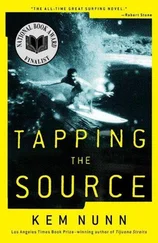
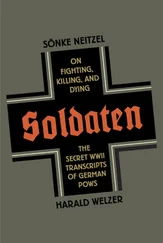

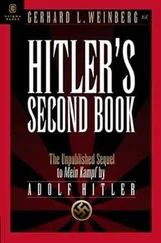
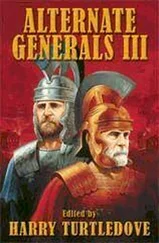
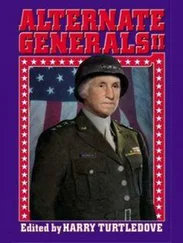

![Traudl Junge - Hitler's Last Secretary - A Firsthand Account of Life with Hitler [aka Until the Final Hour]](/books/416681/traudl-junge-hitler-s-last-secretary-a-firsthand-thumb.webp)



